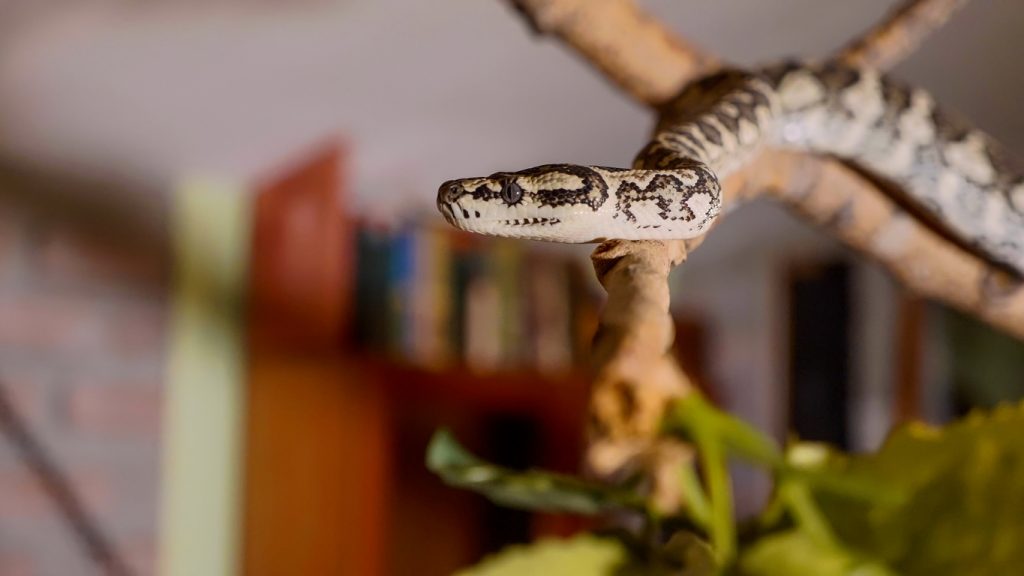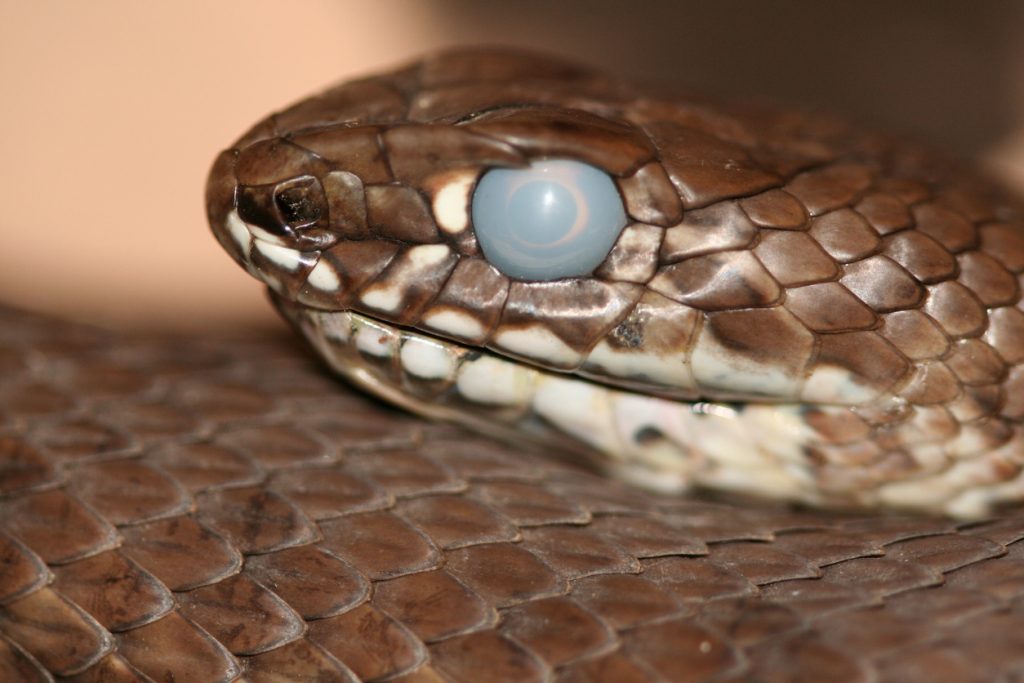All animals, including humans, shed their skin throughout their lives. Most will do this by shedding tiny flakes of skin (often so small you can’t even see them) all the time- a process called exfoliation.
But snakes are different.
They shed their entire outer layer of dead skin all at once- or at least in large pieces. This may seem like a pretty weird and wonderful phenomenon, but for snakes it’s not only a completely normal and natural process, it’s also essential. And if a snake isn’t shedding, it could be a sign that something’s wrong.
This article covers this incredible process in detail, exploring why snakes shed, the shedding process, and what to do if your snake stops shedding.
Snake shedding skin- why do they do it?
The skin shedding or moulting process is important for these slithering creatures because:
- It aids with wound healing as it removes any damaged skin
- It allows snakes to grow normally as when a snake’s body grows their skin will often stay the same size- meaning that every time they shed an old skin layer, a new layer will form underneath which is a better fit for them.
- It enables them to remove unwanted creepy-crawlies that may be living on their outer skin layer

Are there any drawbacks to shedding?
Although there are many benefits to skin shedding, it’s worth noting that when a snake first sheds their outer dead skin layer, the fresh new layer underneath will be soft and thin at first. This means that snakes are more at risk to parasites (and predators if they are living in the wild!) when they first moult, although the layer will eventually harden and thicken over time.
How often do snakes shed?
How often a snake sheds depends on several factors which including:
- Growth
- Nutritional state (if they are over/underweight)
- Age
- Overall size (which will vary across individuals as well as different species of snake)
- Environmental factors
This means that in growing, immature snakes shedding can happen as often as every 2 weeks. But as a general rule snakes will normally moult 2-4 times a year.
Pet snake lifespan
How long your pet snake lives will often depend on their species but, on average, snakes will normally tend to live until they around 10 years old, meaning that they will shed around 20 times during their lifetime.
While this may seem like a lot, there are also some larger snake species (such as boas and pythons) who can live for a lot longer- sometimes over 20 years- and this means that they could shed up to 40 times throughout their lives!
How to tell if your snake is shedding
Around one week before your pet snake starts to shed, they will normally become more inactive, and their ‘spectacles’ (which are the layers of tissue that cover their eyes) will often become cloudy. Your snake’s skin will also often become dull and lighter in colour and you may be able to see where the old skin is staring to break away from the new skin layers.

During the shedding process, you may also notice that your snake become more anxious or aggressive. This is because, as previously mentioned, snakes can often be more vulnerable during (and shortly after) the shedding or moulting process as they expose a new layer of more delicate skin, and they will often become more defensive in order to protect themselves.
Pet snake not eating?
As well as behavioural changes, snakes may also go off their food before shedding. So, if you notice your pet snake is not eating as normal, its important to keep a close eye on them, as inappetence can be a sign of illness, as well as shedding. So if you have any concerns about your snake’s eating, it’s always best to contact a vet who specialises in reptiles and unusual pets.
Snake shedding process
Once your snake starts to actively shed, you will often see them rubbing their bodies against objects in the surrounding environment, and they do this to try and to help to free their outer skin layer. Normally a snake will remove the whole layer of skin in one go, although some larger species will also tear their skin off in smaller pieces.
If you are worried that your snake has not shed fully (including their cloudy spectacles which should also fall off when a snake sheds) it’s always best to talk to an exotics vet and avoid handling your snake as this can damage their new skin layer and interrupt the moulting process.
What to do if you snake isn’t shedding
While it’s important to have a rough idea of how often you snake is shedding, it’s worth remembering that not all snakes will shed at the same frequency. So, if your snake is shedding more or less often than expected, it’s not always a sign that something is wrong.
However, if you have noticed your snake hasn’t shed for some time, it’s worth paying attention to their general health, as if your snake isn’t moulting, it can sometimes be a sign that they aren’t very well. Snakes may not shed properly, or may stop shedding altogether due to:
- Mites and other parasites on their skin
- Bacterial infections
- Incorrect humidity
- Handling
- Incorrect nutrition
- Trauma
- Other illnesses
As always, if you have any questions or concerns, talk to your vet for advice. Your local pet shop expert will also have tips on how to care for your pet reptiles.
Want to know more about reptiles? Check out our article on reptiles and heat lamps!


